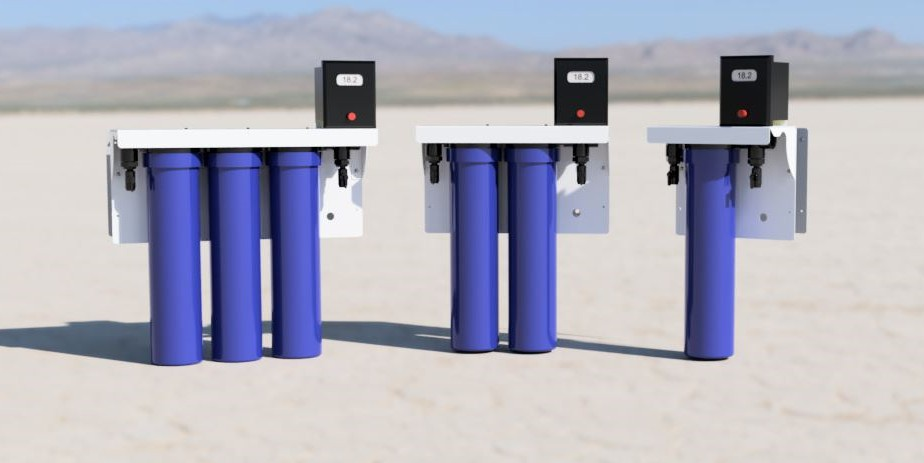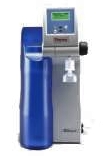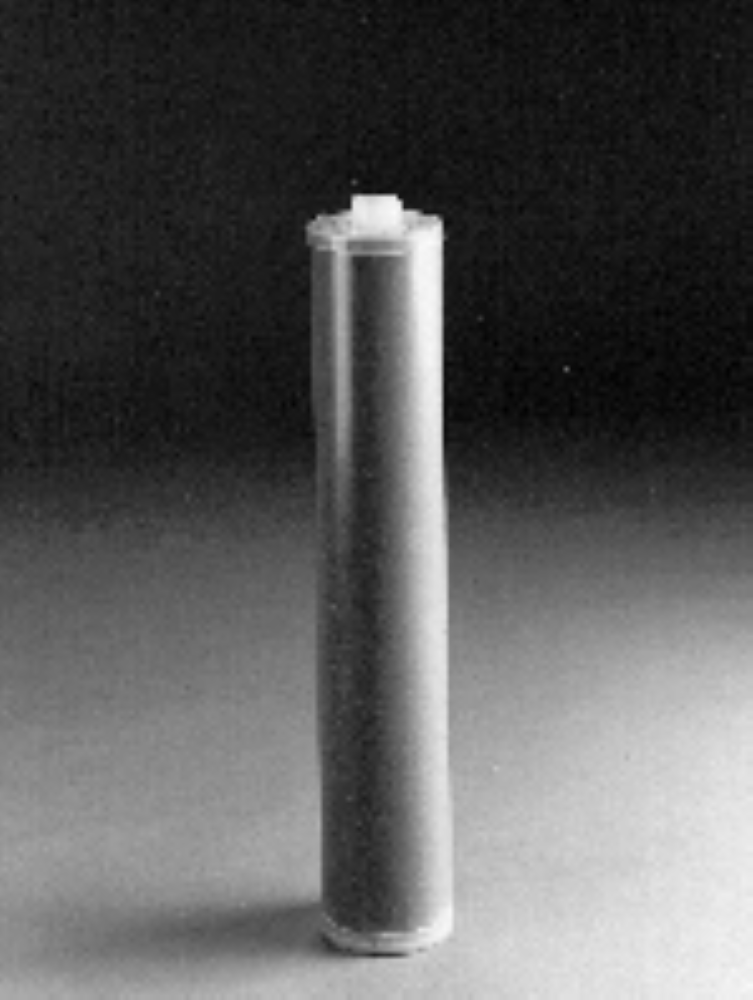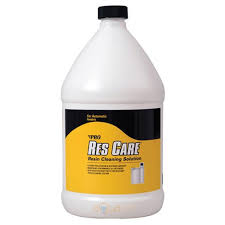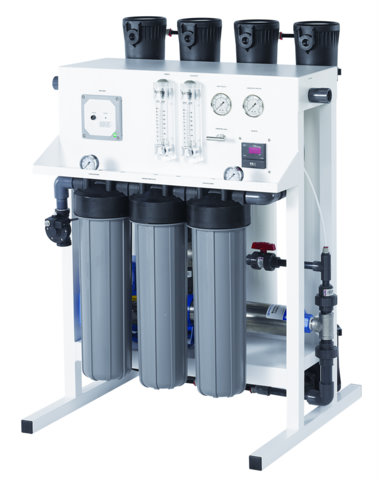About Activated Carbon Filtration
Activated carbon is widely used in water filtration systems. Carbon is very effective at improving taste, removing chlorine and many other contaminants. A drawback to Activated Carbon is that its high surface area and the Carbon itself promote bacterial growth. Pseudomonas Bacteria has been found to grow in many carbon filters and activated carbon systems.
Activated carbon for drinking water systems should always be followed by :
ultraviolet sterilization systems.
For more information about Pseudomonas Bacteria read :
Pseudomonas In Purified Water, Spas and Drinking Water Systems
Special care has to be taken to control the growth of bacteria in carbon filters and systems especially when used in medical applications, pharmaceutical applications and drinking water systems with consumers having compromised immune systems and the elderly.
Using Activated Carbon Equipment and Filters
What Contaminants Do Activated Carbon Filters Remove From Water?
Activated carbon (AC) filtration is most effective in removing organic contaminants from water. Organic substances are composed of two basic elements, carbon and hydrogen. Because organic chemicals are often responsible for taste, odor, and color problems, AC filtration can generally be used to improve aesthetically objectionable water. AC filtration will also remove chlorine.
Activated carbon filtration does remove some organic chemicals that can be harmful if present in quantities above the EPA Health Advisory Level 'HAL'. Included in this category are trihalomethanes 'THM', pesticides, industrial solvents 'halogenated hydrocarbons', polychlorinated biphenyls 'PCBs', and polycyclic aromatic hydrocarbons 'PAHs'
THMs are a byproduct of the chlorination process that most public drinking water systems use for disinfection. Chloroform is the primary THM of concern. EPA does not allow public systems to have more than 100 parts per billion 'ppb' of THMs in their treated water. Some municipal systems have had difficulty in meeting this standard.
The Safe Drinking Water Act mandates EPA to strictly regulate contaminants in community drinking water systems. As a result, organic chemical contamination of municipal drinking water is not likely to be a health problem. Contamination is more likely to go undetected and untreated in unregulated private water systems. activated carbon filtration is a viable alternative to protect private drinking water systems from organic chemical contamination.
Radon gas can also be removed from water by activated carbon filtration, but actual removal rates of radon for different types of activated carbon filtration equipment have not been established.
What activated carbon does NOT remove
Similar to other types of water treatment, activated carbon filtration is effective for some contaminants and not effective for others. activated carbon filtration does not remove microbes, sodium, nitrates, fluoride, and hardness. Lead and other heavy metals are removed only by a very specific type of activated carbon filter. Unless the manufacturer states that its product will remove heavy metals, the consumer should assume that the activated carbon filter is not effective in removing them. Refer to the other circulars in the Treatment Systems for Household Water Supplies series for information on systems that do remove the contaminants listed above.
Water Testing
Regular water testing is recommended to reduce the risk of consuming contaminated water. Many contaminants are not detected by the senses. Even if contamination can be detected by color, smell, or taste, only a laboratory test can tell you the quantity of contaminant actually present. Testing should always be done by a reputable or certified laboratory. Prior to sending in your water sample, determine what you want your water tested for. Contact the laboratory to find out how to take a proper water sample. Remember, there are thousands of substances that can contaminate your water, and they all have slightly different chemical behavior. Proper sampling and handling for one type of contaminant may cause erroneous results for other types of contaminants.
Once you have the laboratory results in hand, make sure you understand the numbers. If you don't fully understand the results, don't assume anything. The testing laboratory will be able to answer any questions you may have regarding your test results. Understanding the laboratory results will help you select the best and most economical water treatment system. Sometimes just a single piece of equipment, such as an activated carbon filter, is all that is necessary to treat the problem. Other times you may need completely different equipment or possibly a combination of equipment. It all depends on the type and amount of contaminants present in your water.
The Activated Carbon Filtration Process
Activated carbon works by attracting and holding certain chemicals as water passes through it. activated carbon is a highly porous material; therefore, it has an extremely high surface area for contaminant adsorption. The equivalent surface area of 1 pound of activated carbon ranges from 60 to 150 acres.
Activated carbon is made of tiny clusters of carbon atoms stacked upon one another. The carbon source is a variety of materials, such as peanut shells or coal. The raw carbon source is slowly heated in the absence of air to produce a high carbon material. The carbon is activated by passing oxidizing gases through the material at extremely high temperatures. The activation process produces the pores that result in such high adsorptive properties.
The adsorption process depends on the following factors: 1' physical properties of the AC, such as pore size distribution and surface area; 2' the chemical nature of the carbon source, or the amount of oxygen and hydrogen associated with it; 3' chemical composition and concentration of the contaminant; 4' the temperature and pH of the water; and 5' the flow rate or time exposure of water to activated carbon.
Physical Properties
Forces of physical attraction or adsorption of contaminants to the pore walls is the most important activated carbon filtration process. The amount and distribution of pores play key roles in determining how well contaminants are filtered. The best filtration occurs when pores are barely large enough to admit the contaminant molecule 'Figure 1'. Because contaminants come in all different sizes, they are attracted differently depending on pore size of the filter. In general activated carbon filters are most effective in removing contaminants that have relatively large molecules 'most organic chemicals'. Type of raw carbon material and its method of activation will affect types of contaminants that are adsorbed. This is largely due to the influence that raw material and activation have on pore size and distribution.
Chemical Properties
Processes other than physical attraction also affect activated carbon filtration. The filter surface may actually interact chemically with organic molecules. Also electrical forces between the activated carbon surface and some contaminants may result in adsorption or ion exchange. Adsorption, then, is also affected by the chemical nature of the adsorbing surface. The chemical properties of the adsorbing surface are determined to a large extent by the activation process. activated carbon materials formed from different activation processes will have chemical properties that make them more or less attractive to various contaminants. For example chloroform is adsorbed best by activated carbon that has the least amount of oxygen associated with the pore surfaces. The consumer can't possibly determine the chemical nature of an activated carbon filter. However, this does point out the fact that different types of activated carbon filters will have varying levels of effectiveness in treating different chemicals. The manufacturer should be consulted to determine if their filter will adequately treat the consumer's specific water problem.
Contaminant Properties
Large organic molecules are most effectively adsorbed by Activated Carbon. A general rule of thumb is that similar materials tend to associate. Organic molecules and activated carbon are similar materials; therefore there is a stronger tendency for most organic chemicals to associate with the activated carbon in the filter rather than staying dissolved in a dissimilar material like water. Generally, the least soluble organic molecules are most strongly adsorbed. Often the smaller organic molecules are held the tightest, because they fit into the smaller pores.
Concentration of organic contaminants can affect the adsorption process. A given activated carbon filter may be more effective than another type of activated carbon filter at low contaminant concentrations, but may be less effective than the other filter at high concentrations. This type of behavior has been observed with chloroform removal. The filter manufacturer should be consulted to determine how the filter will perform for specific chemicals at different levels of contamination.
Water Temperature and pH
Adsorption usually increases as pH and temperature decrease. Chemical reactions and forms of chemicals are closely related to pH and temperature. When pH and temperature are lowered many organic chemicals are in a more adsorbable form.
Exposure Time
The process of adsorption is also influenced by the length of time that the activated carbon is in contact with the contaminant in the water. Increasing contact time allows greater amounts of contaminant to be removed from the water. Contact is improved by increasing the amount of activated carbon in the filter and reducing the flow rate of water through the filter.
Further Information
For further information contact your local county Extension Office or State Health Department.
References
1989. Recognized treatment techniques for meeting the National Primary Drinking Water Regulations with the application of point-of-use systems. Water Quality Association, Lisle, Il.
1989. Recognized treatment techniques for meeting the National Secondary Drinking Water Regulations with the application of point-of-use systems.
1990. Fit to drink? Consumer Reports. pp. 27-43, January.
Caldron, R. L., and E. W. Mood. 1987. Bacteria colonizing point-of-use, granular activated carbon filters and their relationship to human health. Research Project CR-811904-01-0, Health Effects Research Lab., U.S. EPA, Cincinnati, OH. Reprinted by the Water Quality Association, Lisle, IL.
Culp, G. L. and R. L. Culp. 1974. New concepts in water purification. Van Nostrand Reinhold Co., New York.
Ishizake, C., I. Marti, and M. Ruiz. 1983. Effect of surface characteristics of activated carbon on the adsorption of chloroform from aqueous solution. In M. J. McGuire and I. H. Suffet 'ed.', pp. 95-106. Treatment of water by granular activated carbon. Advances in Chemistry Series. American Chemical Society, Washington, D.C.
Rodale Press Product Testing Department Staff. 1985. Water treatment handbook - A homeowners quide to safer drinking water. Rodale Press Inc., Emmaus, PA.
Taraba, J. L., L. M. Heaton, and T. W. Ilvento. 1990. Using activated carbon filters to treat home drinking water, IP-6. University of Kentucky Cooperative Extension Service, Lexington, KY.
Temple, Barker, and Sloan Inc. Staff. 1983. Point-of-use treatment for compliance with drinking water standards. Reprinted by the Water Quality Association, Lisle, IL.
Funding for this publication was by the U.S. Department of Agriculture, Extension Service, under project number 90-EWQI-19252.
|
Images are representative of the products. Images may or may not be of the actual product. If it is important e-mail us for an actual image if available.
* Flat Rate UPS shipping when able to ship via UPS and is in the USA excluding Hawaii and Alaska.
Larger Items may not be able to ship via UPS, in that case freight charges will be quoted seperately.
International shipping will be quoted after the order is placed. You will have the opportunity to cancel before we finalize your order.
Terms and conditions
Credit Application
Privacy
Policy
List All Products
|
